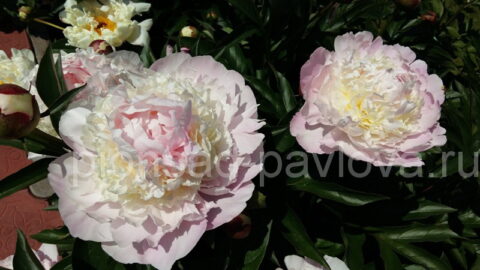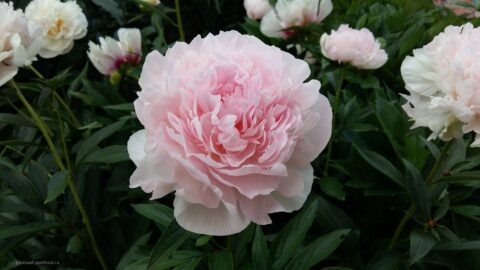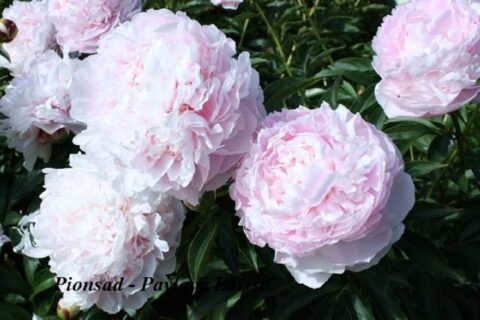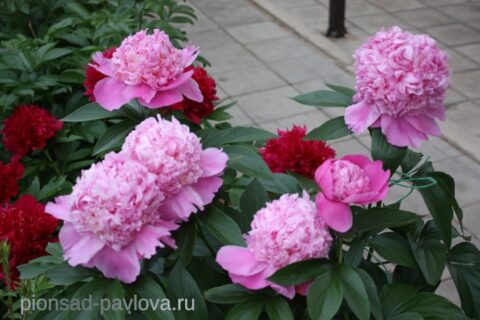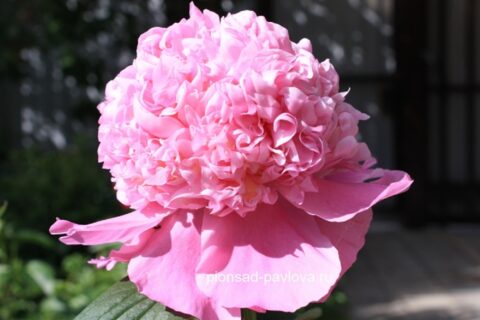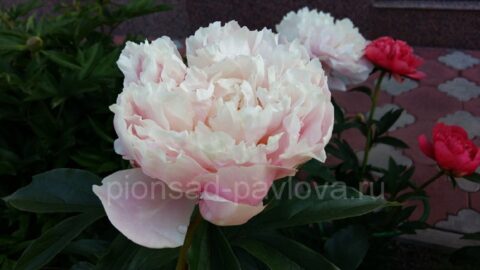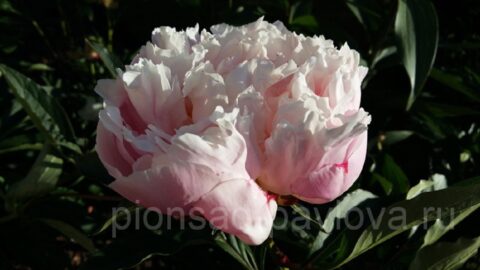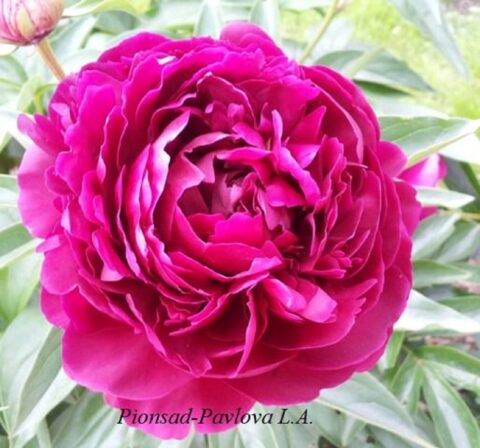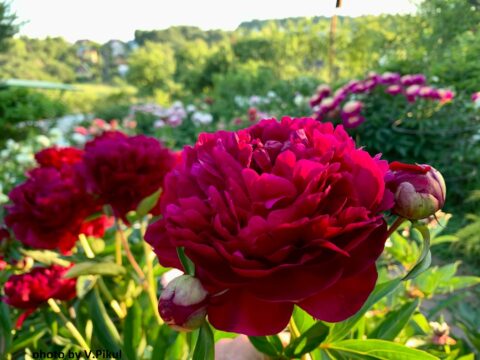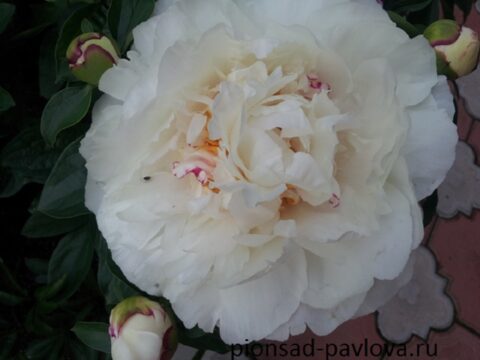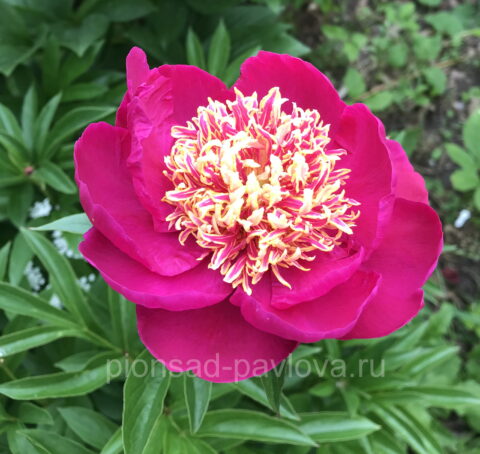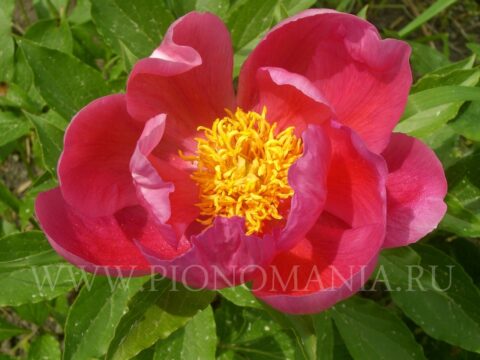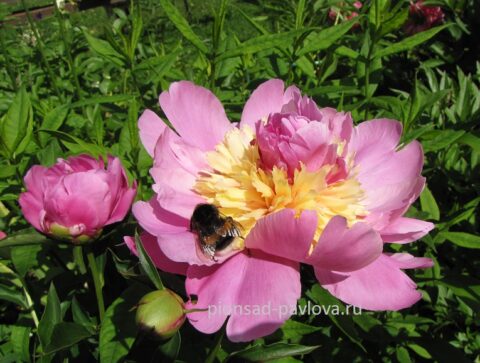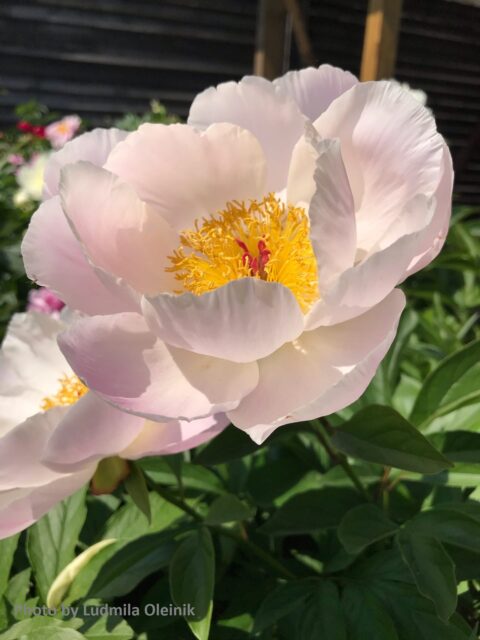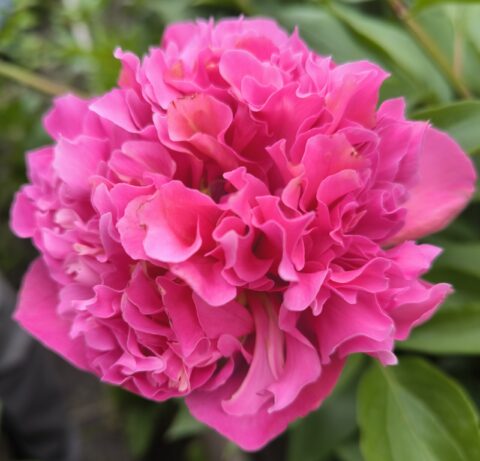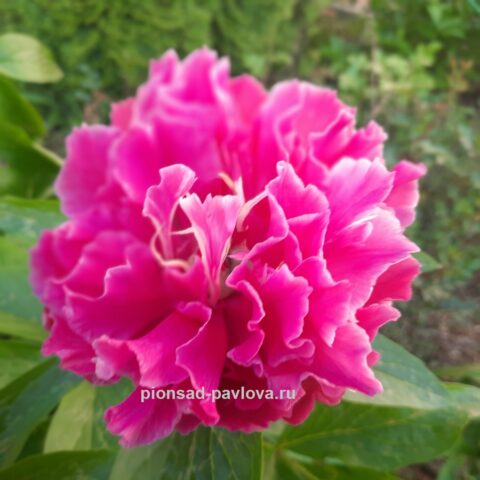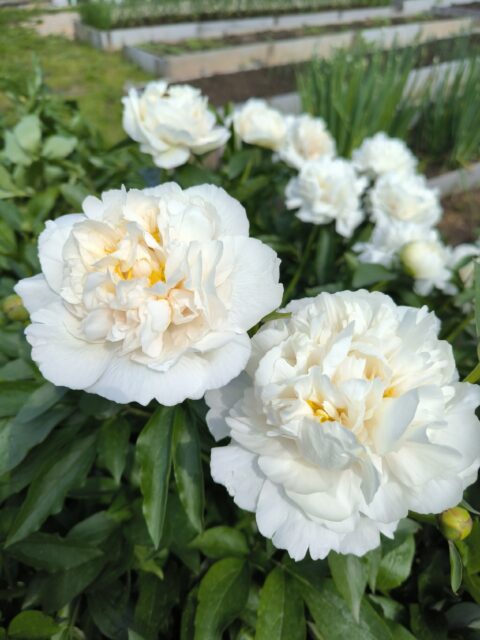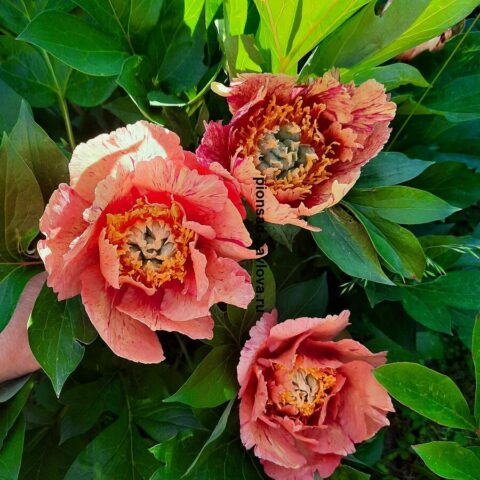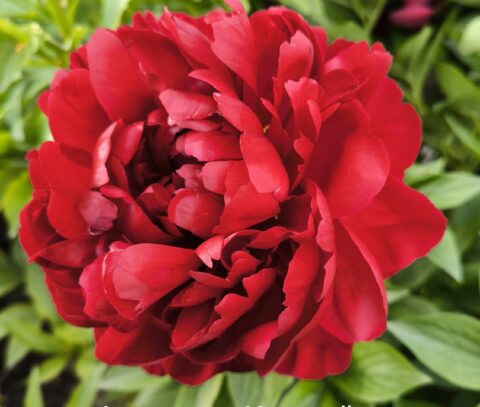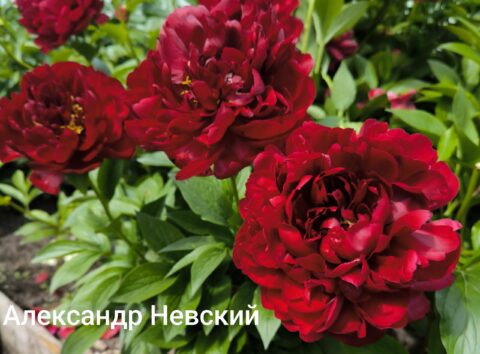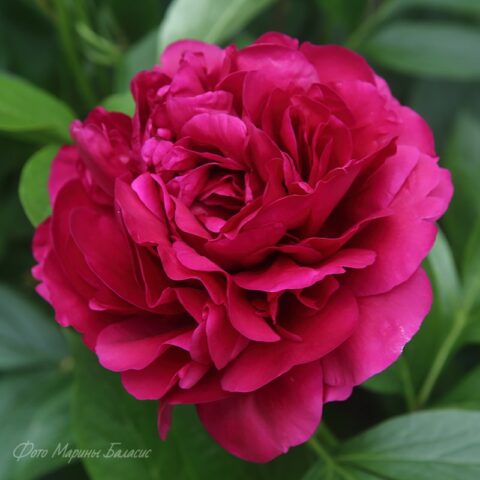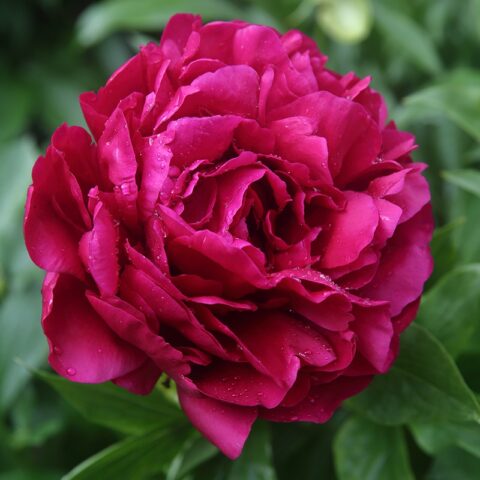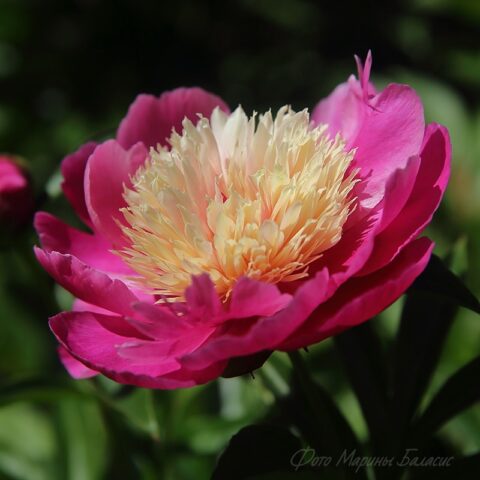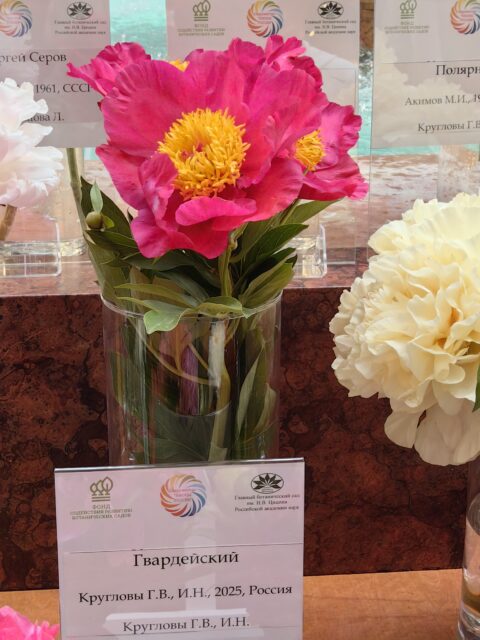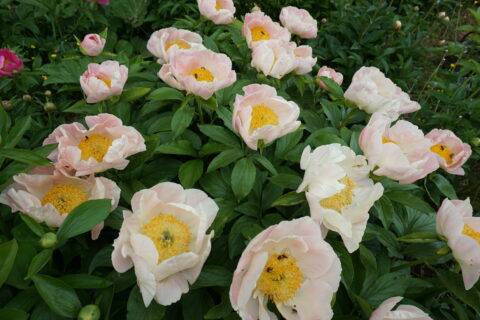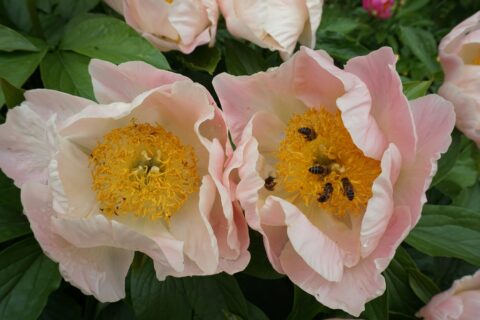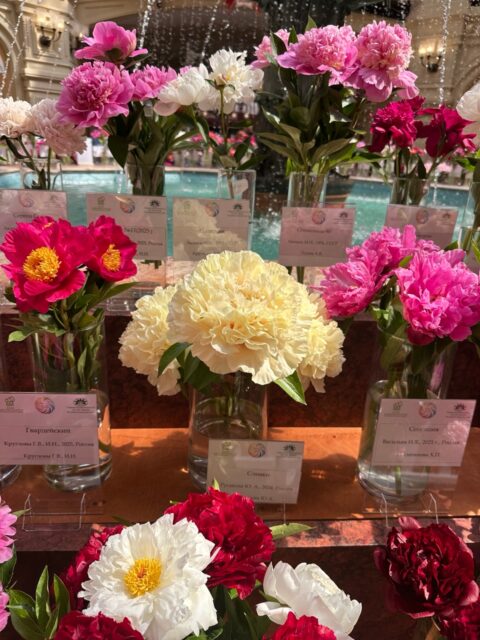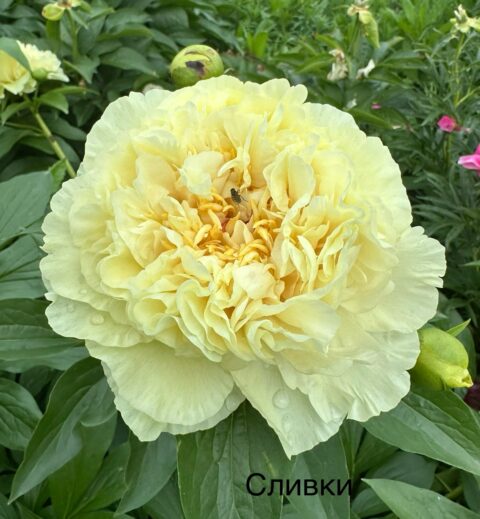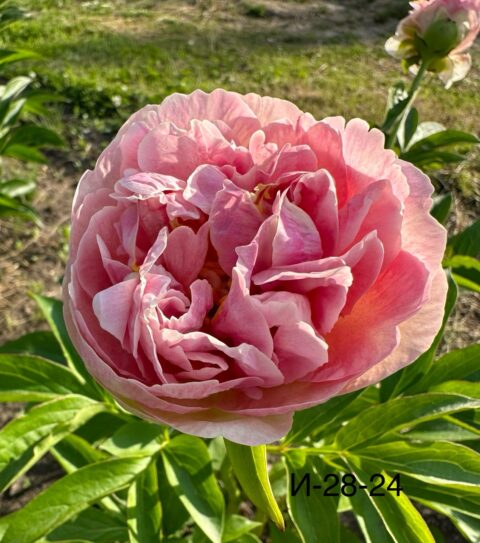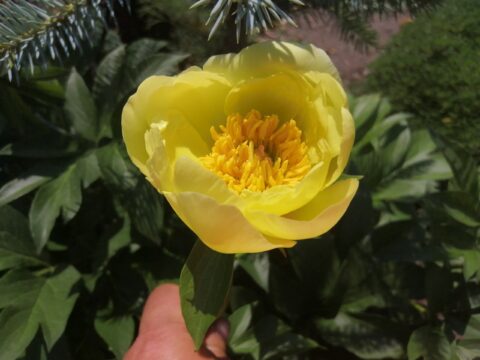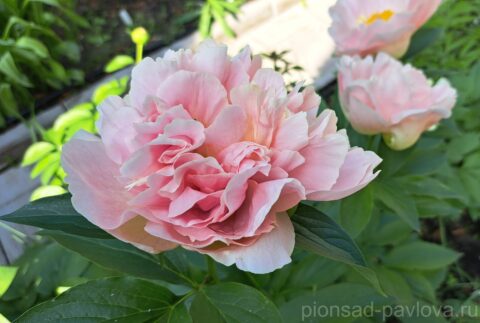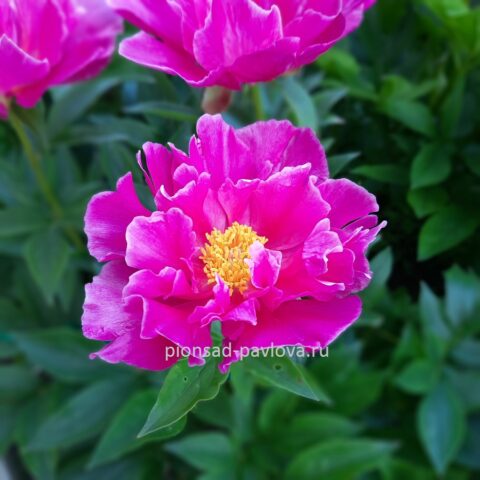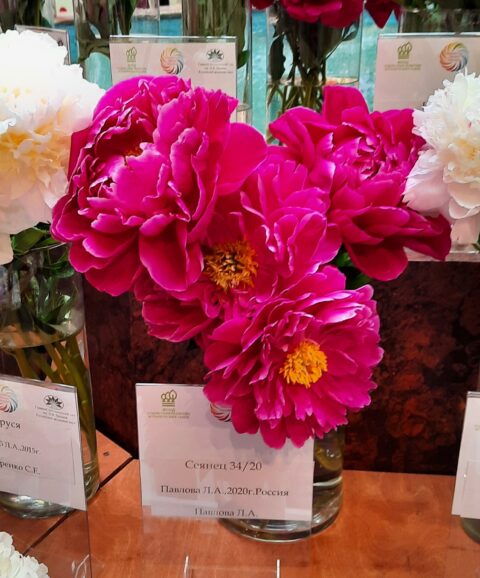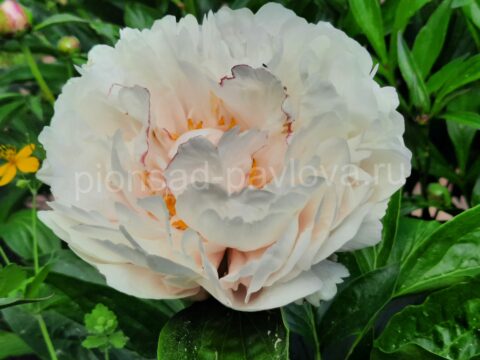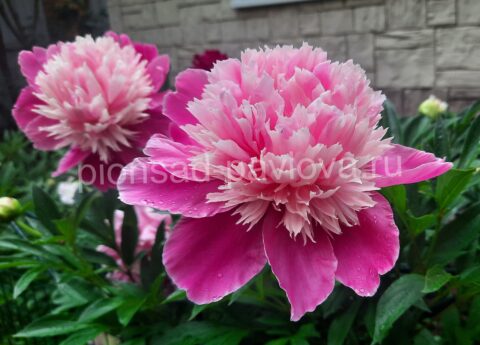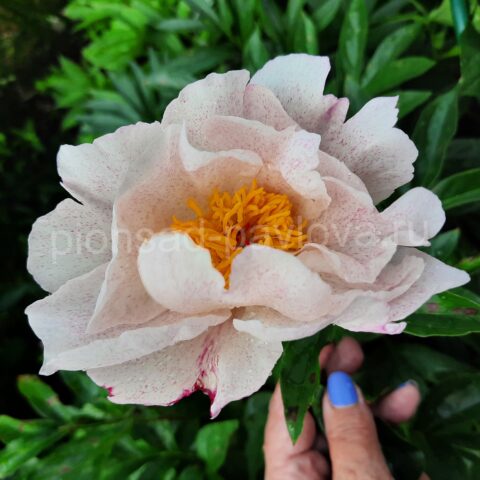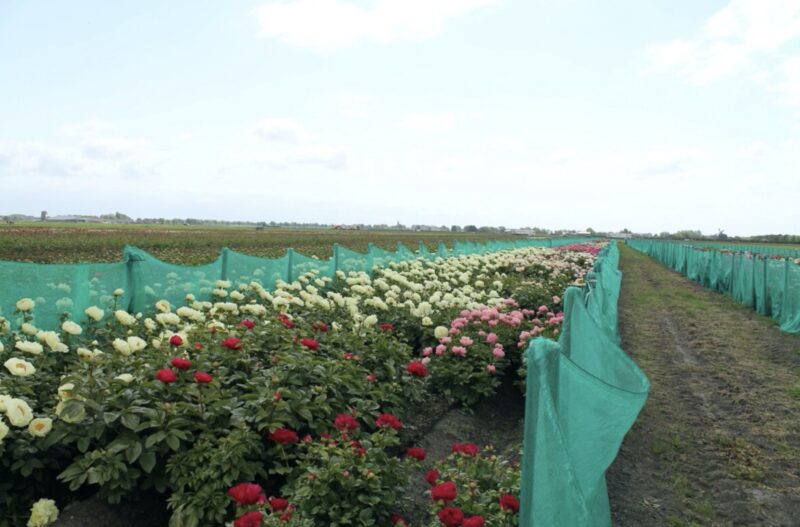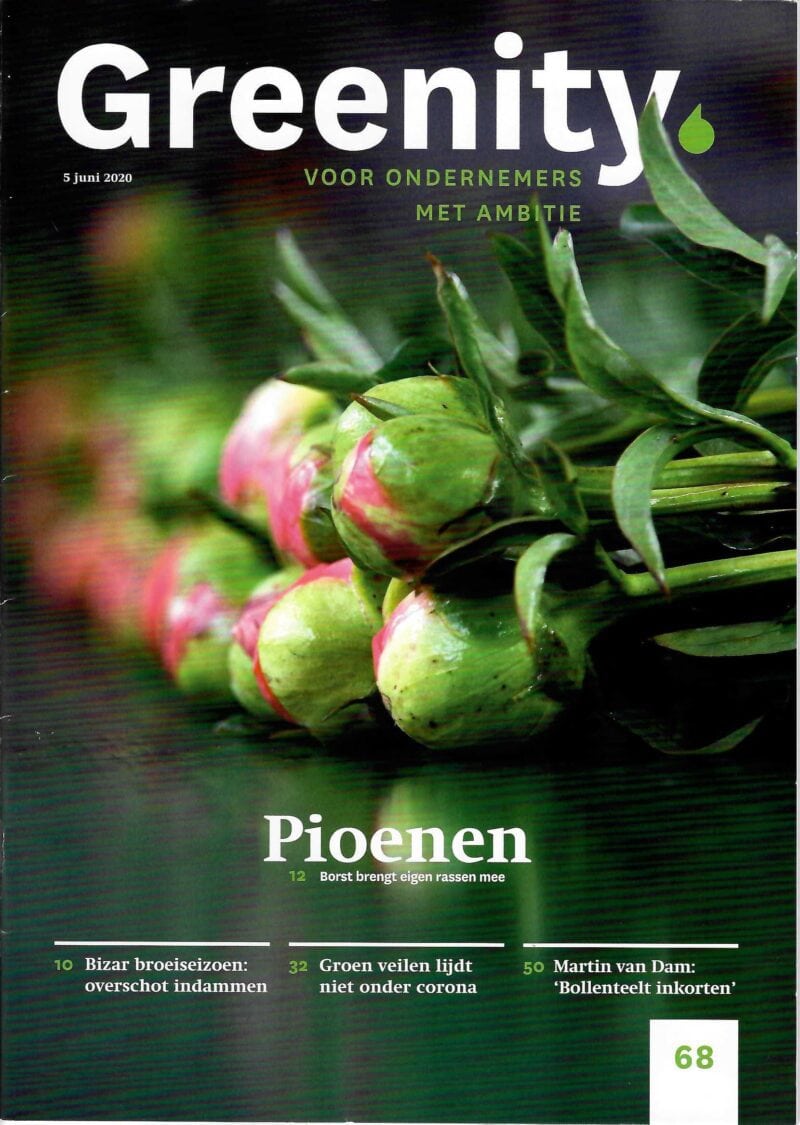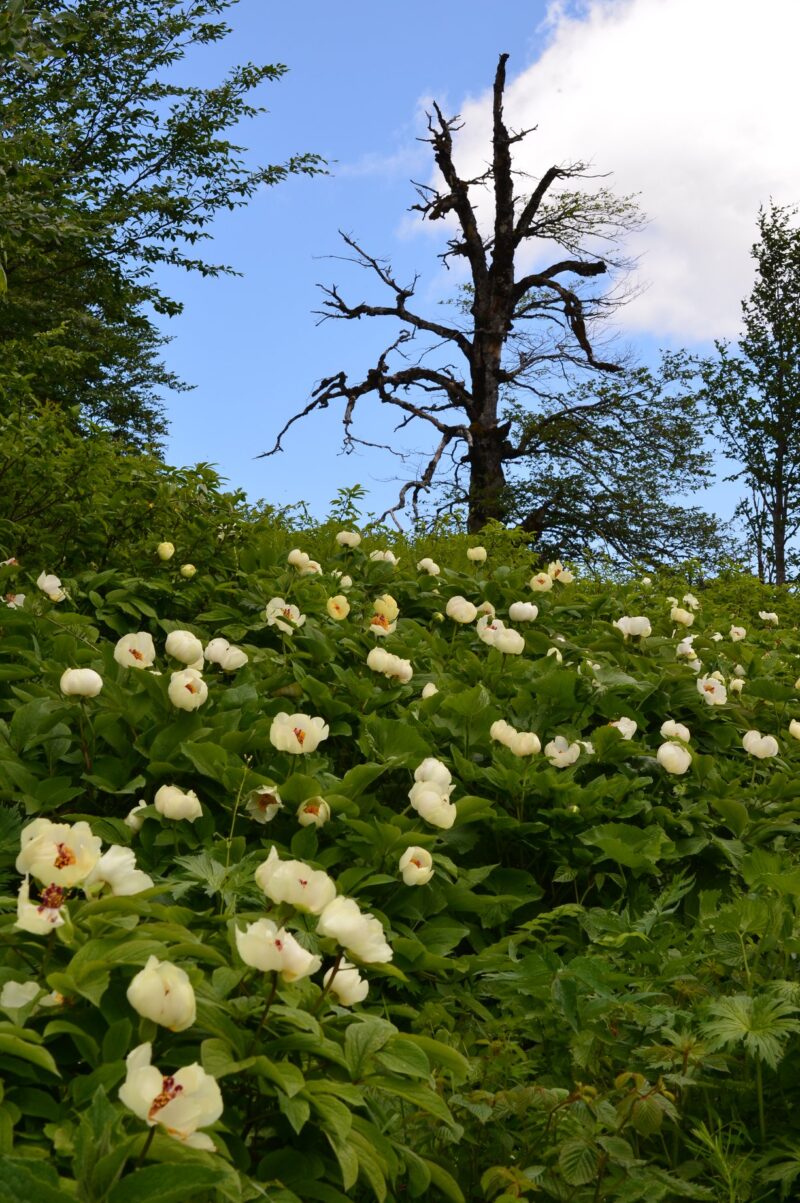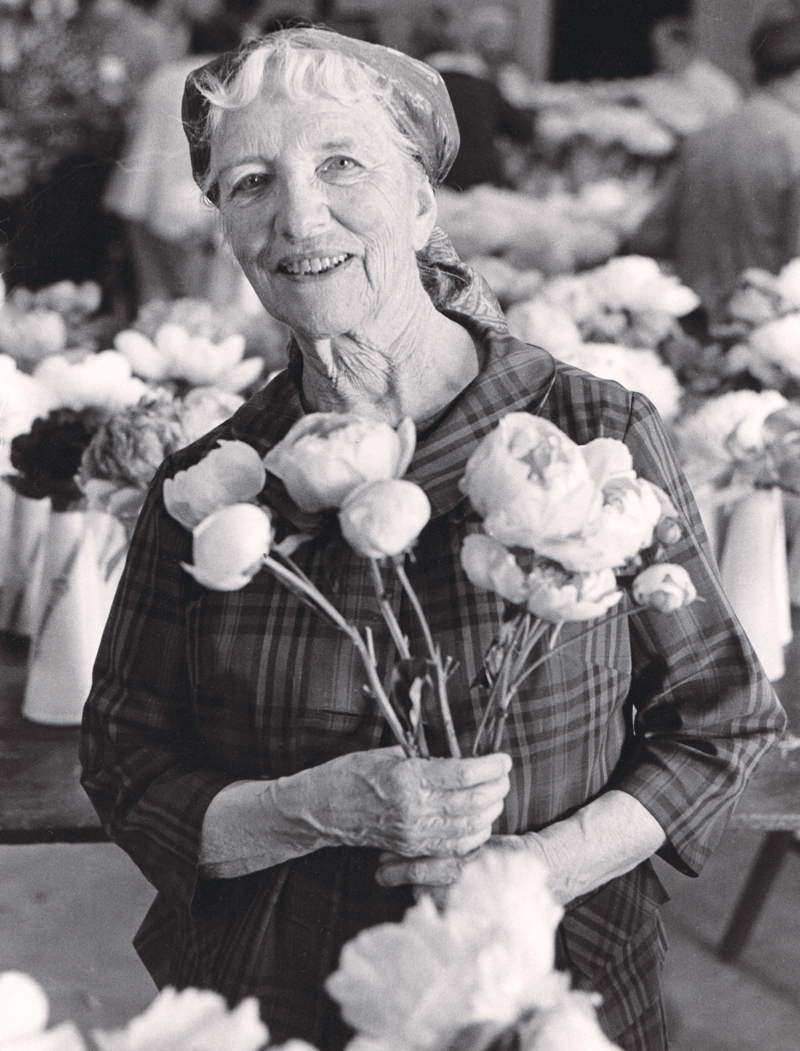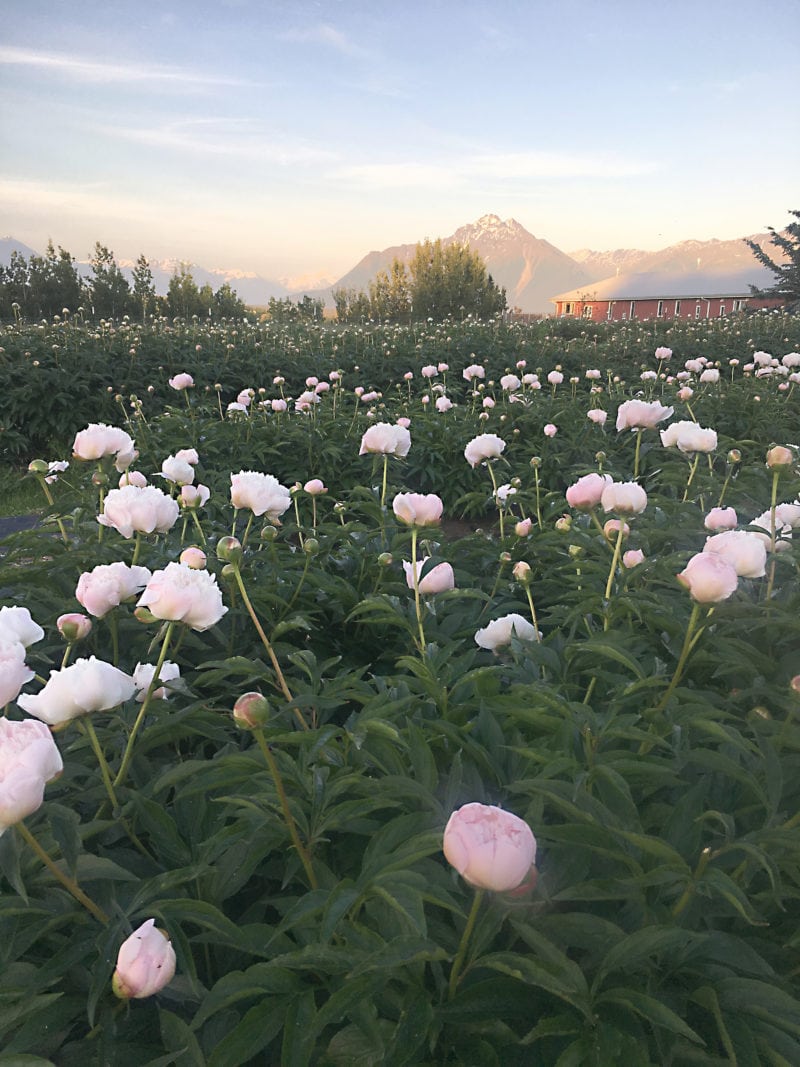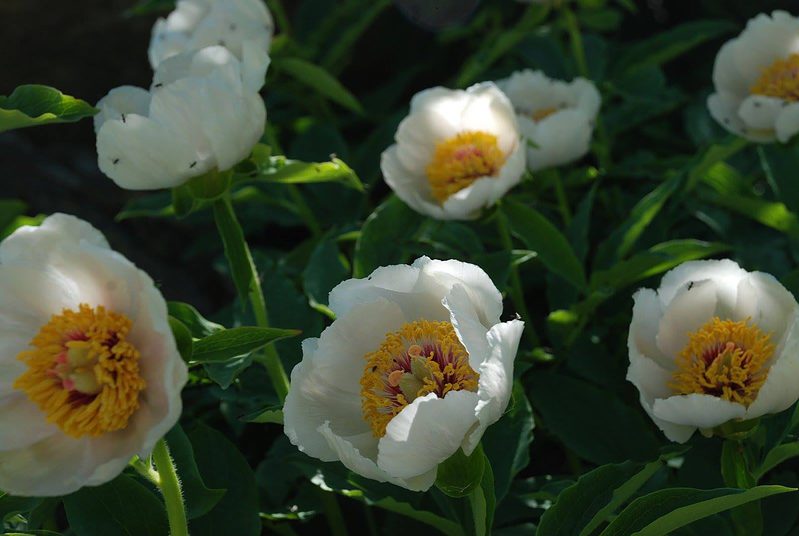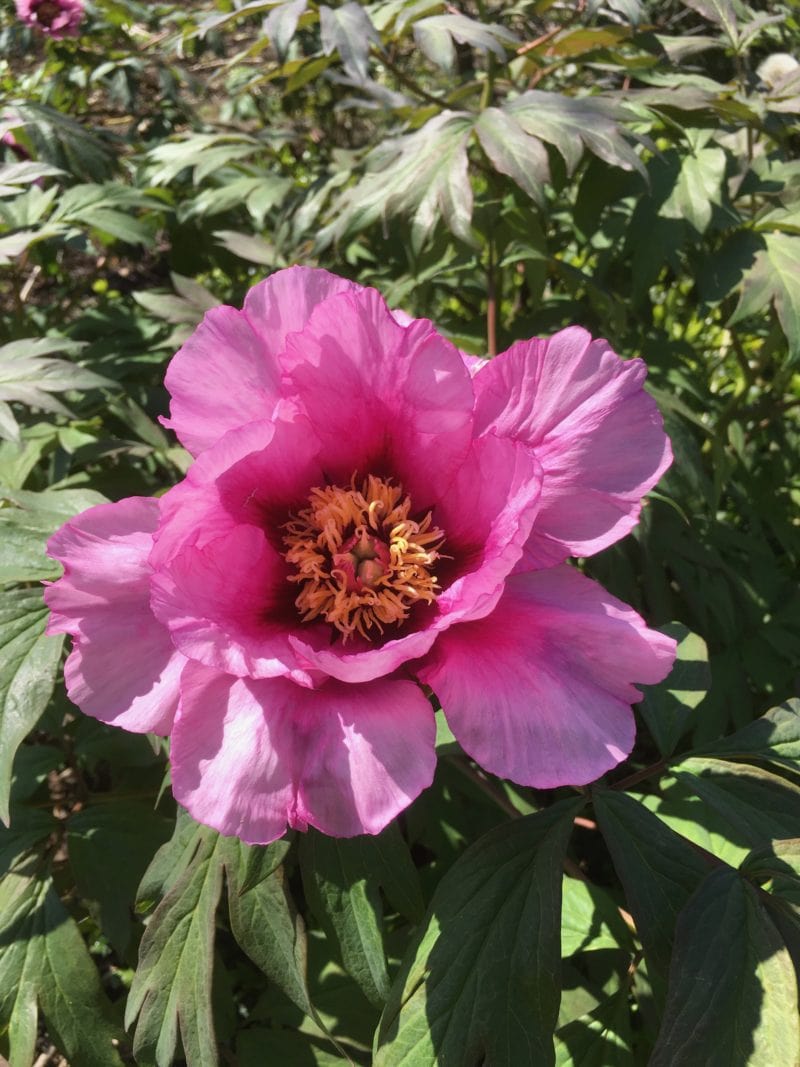Peonies have always been a favorite in Russian gardens, and interest in them has never waned. This flower has never been forgotten. Over time, many gardeners have cultivated collections of peony varieties, selecting cultivars with different bloom times and flower shapes. Every year, a “hunt” for coveted peony varieties is underway. In recent years, foreign supplies of peony planting material from America, Europe, and New Zealand have been a great help. But this wasn’t always the case. For example, during the Soviet era (1922-1991), foreign purchases of peony varieties were behind the “Iron Curtain” and acquisitions were only available through botanical gardens, experimental stations, and flower clubs. It should be noted that the variety selection was not very diverse. This apparently served as a certain incentive for the creation of new domestic peony varieties. And although the path from sowing a seed to first flowering is long and takes years, there have always been, are, and will be enthusiasts who patiently create new, beautiful peony varieties for us.
This article originally appeared in Russian in Floriculture magazine, 2025. Written by Larisa Pavlova, it gives an overview of recent hybridizing efforts by Russian hybridizers and their creations. Mrs Pavlova is president of the Commonwealth of Russian Peonies (CRP). In 2019 she has published a registry of Russian cultivars with some 559 Russian peony descriptions. Lately another 100 have been added to this registry in a separate Bulletin published by the organisation. These peony varieties were hybridized by some 52 different persons, half of them amateurs, the other half connected to some botanical garden or research institute.
The CRP was established in 2019, after publication of that registry, by Mrs Pavlova together with Marina Balasis and Yulia Rusakova-Shirokih. The CRP unites hybridizers with collectors. It tries to popularize Russian peony varieties through different activities: exhibitions, festivals, conferences and breeding seminars.
Mrs Pavlova has kindly given permission to publish this translation of her article. All images are also supplied by her, except those of Marina Balasis and Joelia Roesakova-Sjirokich who supplied photos of their plants. If you click on the images a pop-up with a larger photo will appear under which you will find the name of the cultivar or seedling.
Former Soviet territories no longer belonging to Russia are not included within this article, that’s why there is no mention here of those well-known hybridizers Skakodub (Kazachstan) nor Gorobets (Ukraine).
Krasnova
Domestic breeding of herbaceous peonies began immediately after the end of World War II (WWII) at the N.V. Tsitsin Main Botanical Garden in Moscow. This work was led by Nadezhda Sergeevna Krasnova, a senior researcher at the Main Botanical Garden. The primary goal of the breeding effort was to develop varieties with a compact bush, upright stems, and highly decorative flowers, as well as cut flowers with 35-40 cm long stems, as well as early- and late-blooming varieties. N.S. Krasnova’s varieties “Varenka,” “Arkady Gaidar,” “Vesenniy,” “In Memory of Gagarin,” and others today still adorn Russian gardens and remain beloved and sought after by gardeners.
Sosnovets and Fomicheva
Anastasia Antonovna Sosnovets and Vera Fedotovna Fomicheva were engaged in breeding work at the Botanical Garden of Moscow State University. Their work focused on developing new domestic varieties with a long flowering period, unique flower color, and adaptation to the region’s soil and climate conditions. For over half a century, A.A. Sosnovets’ varieties, including “Yunost,” “Belyi Parus,” “Vechernyaya Moskva,” and “Zolushka,” have been cultivated in amateur and botanical gardens. V.F. Fomicheva’s varieties, including “Martian,” “Fakel,” and “Solveig,” are also grown.
Markov and Akimov
Hobbyist gardeners also followed the lead of botanical garden breeders. Aleksey Georgievich Markov pioneered amateur peony breeding, beginning his first breeding experiments before WWII. Immediately after the war, he created the peony varieties “Butterflies” and “Memory of George,” which, unfortunately, are now lost. After the war, amateur gardening experienced an unprecedented boom, driven by a desire for beauty and creativity. Mikhail Ivanovich Akimov, returning from the front and graduating from the Podbelsky Moscow Technical University, became fascinated with floriculture. After retiring, he devoted himself entirely to working with peonies and creating new, promising varieties. Unfortunately, the fate of M.I. Akimov’s collection was rather sad: he was too attached to his varieties and seedlings and was reluctant to part with them. After his death, many of his varieties disappeared without a trace. Data on the number of varieties created by Mikhail Ivanovich varies: according to some sources 58, according to others 67, and currently there are about 25 in collections. For his achievements in peony breeding, M.I. Akimov was awarded a Gold Medal at the All-Russian Exhibiton Center, one of the largest exhibition centers in the world, located in Moscow. He primarily experimented with parental pairs from P. lactiflora , resulting in varieties with a classic rose-like shape. Mikhail Ivanovich devoted particular attention to creating varieties with a Japanese flower shape (“Golden Fleece,” “Canary,” and others). One of the first in our country, Akimov successfully engaged in interspecific hybridization , using a combination of P. officinalis rubra plena x P. lactiflora . This year, at the Russian Peony Society online exhibition, his hybrid varieties “Iskra Nadezhdy,” “Major Gagarin” (best of the red varieties), and “Pionersky Koster” (best of the rare varieties) took the lead in various categories. Collectors and gardeners, who highly value their decorative qualities, continue to seek out varieties such as “Olimpiada-80,” “Typhoon,” “Rossiya,” “Sadko,” “Polonez,” “Nadezhda,” and others.
Dubrov
A peony cultivar with a Japanese flower shape, “Mikhail Akimov,” was named in honor of M.I. Akimov. It was created by Vladimir Meerovich Dubrov, a fellow member of Mikhail Ivanovich’s flower growers’ club. Vladimir Meerovich is a renowned peony breeder, plant breeder, and author of books on peonies. In his breeding work, he used various experiments with herbaceous peonies, such as pollination methods: controlled pollination with the isolation of the pollinated cultivar (“bagging”), and controlled pollination with a selected pollen mixture of cultivars, with the isolation of the pollinated cultivar. Recently, he has used the open pollination method, following the famous words of the French breeder F. Crousse : ” Who better than God!” He successfully used Japanese-shaped peonies as mother plants, which were incapable of self-pollination (paternal sterility). Later, Vladimir Meerovich became interested in cultivars with Japanese-shaped flowers, which are too scarce in the domestic peony selection. The resulting varieties, “Zaryanka,” “Liza Shimanko ,” “Flora,” “Vanechka,” and others, have proven very successful. Vladimir Meerovich Dubrov created remarkable varieties such as “Kurilskie Ostrova , ” “Katyusha Dubrova,” “Podmoskovny,” “Prokhlada,” “Mom’s Heart,” and others. Many of his varieties are deservedly popular among gardeners and have been recognized in various categories at peony exhibitions. It was his legendary variety, “Svetlana Udintseva,” that graced the cover of the collection “Domestic Peonies. Register of Varieties and Seedlings” (Pavlova L.A., 2019).
After the Iron Curtain fell (1989), peony lovers turned their attention to the West. Peonies (often of dubious quality) appeared in large chain stores and garden centers. Flower growers banded together to purchase new peony varieties from American and European nurseries. This wasn’t always a positive experience, as misselected , diseased, or poor-quality peony varieties often arrived. Unscrupulous foreign companies took advantage of our inability to file complaints. Furthermore, certain foreign-bred varieties were poorly suited to our climate.
After February 2022 (start of the war between Russia and Ukraine), the flow of orders from foreign nurseries practically stopped, and Russian flower growers were once again faced with the question: “Where to buy new varieties?” And, as our eternal enthusiasm once again came to the rescue, we began sowing! Yes, a long, painstaking, routine process where you wait a long time for the first seedlings to bloom, while the rest, in turn, bloom, delighting or disappointing, often failing to live up to expectations.
Vasiliev
Modern domestic breeding has been underway for the past 10 years, gaining momentum. Throughout this time, new seedlings have been shown, which later became cultivars. Ivan Yakovlevich Vasiliev of Veliky Novgorod, an honorary member of the Commonwealth of Russian Peonies (CRP), annually presents his magnificent new cultivars, each possessing high decorative qualities. Visitors to the Novgorod peony exhibition and the online exhibitions of domestic cultivars organized by the CPR can see this for themselves. In 2025, his new cultivars “Swan Vernost,” “Surprise of Altaya,” “Novgorodskoye Veche,” “Sensation,” and “Gavriil Derzhavin” were presented at the “CRP” exhibition of domestic peonies. Ivan Yakovlevich began crossbreeding peonies in 2010, but he believes mistakes were made in selecting the parent pairs. “The parental pair must have the right set of genes to form the desired phenotype of the future hybrid. Gene dominance, fertility, parental ploidy, and other factors must be taken into account. But many factors almost always remain unknown. Therefore, only an approximate portrait of the future complex hybrid can be created, and the likelihood of a match will be higher the more genetic factors of the parents are taken into account. In my opinion, the more complex the hybrid, the higher the likelihood of something new and original appearing in it. That’s why I’ve been trying to create complex hybrids lately.” This is how Ivan Yakovlevich describes his approach to peony breeding which resulted in the first Russian Itoh hybrids “Gospodin Velikiy Novgorod” and “Yaroslav the Wise .”
Upcoming hybridizers
Every year, peony exhibitions in various Russian cities showcase promising seedlings and new domestic varieties at flower growers’ clubs. Since 2020, the Peonies of Russian Commonwealth’s online exhibitions on social media have been effectively supporting this goal. This happens on VKontakte, which provides an opportunity to showcase varieties and seedlings from different regions of our vast country. This platform is a great help for peony breeders who don’t have peony exhibitions in their cities. In 2023, at the online peony exhibition in the Commonwealth of Russian Peonies, peony “Sunny Bunny”, bred by Galina and Ivan Kruglov, became the season’s leader. Ivan and Galina are working on developing varieties with high decorative qualities, strong, harmonious, proliferous bushes with a long flowering period, resistant to weather conditions and diseases (botrytis, rust). They are selecting for landscape and cut flower varieties.
In 2025, the first Bulletin of the Commonwealth of Russian Peonies was published under the editorship of Galina Kruglova, featuring 100 new domestic peony varieties. The Commonwealth of Russian Peonies maintains a register of new varieties that has already become popular among gardeners. These varieties, along with detailed descriptions and photographs, will subsequently be added to the unified register of domestic peonies, which was published in the collection “Domestic Peonies. Register of Varieties and Seedlings” (L.A. Pavlova, 2019). Calling this a true registration is not entirely accurate, but keeping track of new varieties is essential. Commonwealth of Russian Peonies members become familiar with new varieties, seedlings, and cultivation methods not only at exhibitions but also by visiting the gardens of our collectors. In 2025, a Round Table on Breeding was held in Marina Balasis‘ garden, where her new varieties “Galina Dyakova” (Blushing Princess x Mary Gretchen), “Pogodinka,” “Early Dawn,” and others were presented in the garden’s natural conditions. Her primary breeding method is controlled pollination with flower emasculation, selection of parental pairs to obtain interesting flower shapes and color shades, and the use of species peonies in breeding.
In 2025, 71 Russian-bred peony varieties were presented at the Exhibition of Domestic Peonies, 45 of which were presented for the first time. Here are some of them: Ivan and Galina Kruglov’s “Aphrodite”, “Gvardeysky”, “Zhemchuzhinka”; Yulia Roesakova-Sjirokich‘s “Slivki” and “Modnitza”; Svetlana Tichonova‘s “Miloserdie”, “Big Dipper”; Anna Voroshilova‘s “Katyusha”, ” Ruriko “, Alexey Bredikhin‘s ” Zhostovo Rospis”, “Photon” (from Bartzella x Lemon Chiffon); Larisa Pavlova‘s “Lydia”, “Yuzhnaya Noch” (Seedling 34/20). My variety “Lydia” also took top prize in the category “Best Modern Variety” at the 2025 CPR online exhibition, and the “Praskovya Shchegoleva” won the “Victory Peonies” category in 2023 and 2024. Seedlings ” Maryasha ,” “Skromnitsa,” “Otrada,” and others are being prepared for cultivar status. About 300 seedlings have been planted in the garden; they are beginning to bloom, and the most difficult selection awaits—whether to give some a future life or consign others to the trash. In my breeding work, I use various methods of crossing parental pairs, and I also consider open pollination. The main problem, of course, is slow seed germination: a small percentage sprout the following year, the majority in the second year, and sometimes especially slow ones in the third. The reason for prolonged dormancy in peony seeds is an underdeveloped embryo. Its development is essential for seed germination. The longer a seed remains dormant, the more difficult it will be to germinate. This is why peony seeds should be sown freshly harvested, thereby shortening the dormancy period. Another reason for slow seed germination is the deep physiological dormancy of the shoot’s growth point (epicotyl). Lower temperatures are required for it to break dormancy. Thus, stratification (warm-cold-warm) promotes faster germination of peony seeds.
The future
Nowadays, many Russian gardeners have picked up the breeding baton, unafraid of mistakes and failures in the lengthy process of sowing and growing peony seedlings. But the key here is not to get carried away with quantity, as this will inevitably compromise quality. It’s important to remember that breeding is, first and foremost, the selection of new seedlings. Not every seedling has to become a cultivar. This process is very psychologically challenging – it’s hard to throw away a seedling that took five years to grow. But selection is essential, otherwise, after a while, we’ll be inundated with mediocre seedlings that look like identical twins. It’s important to approach the process of creating a new variety creatively, using not only open pollination but also hybridization methods, working with combinations of parental pairs, and striving to create varieties with diverse flower shapes and unique colors. However, the fate of a seedling variety is often determined by the opinions or assessments of amateur gardeners, and demand for particular varieties develops spontaneously and can fluctuate from year to year. Gardeners closely monitor the emergence of new domestic varieties; they are eagerly awaited and eager to acquire them, which means we are on the right track – reviving our Russian peony breeding!
Updates:
Nov 3, 2025: Images added of peonies hybridized by Joelia Roesakova-Sjirokich
Nov 21, 2025: Added better image of peony Photon (Bredikhin) with information about the parentage. Image by Bredikhin himself.




